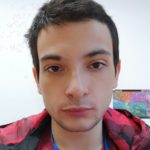Link to HAL – tel-04079922
Parasitologie. Sorbonne Université, 2023. Français. ⟨NNT : 2023SORUS054⟩
Plasmodium falciparum est l’agent pathogène responsable des formes les plus graves de paludisme. P. falciparum a été responsable de 619 0000 décès et 247 millions de cas de paludisme dans le monde en 2022. Le parasite possède un cycle de vie complexe qui se déroule chez les moustiques du genre Anophèles et les hôtes humains. L’artémisinine et ses dérivés, associés à des médicaments partenaires, constituent les thérapies combinées à base d’artémisinine (TCA) et sont les traitements les plus efficaces actuellement disponibles. Malheureusement, depuis plus de 15 ans, des souches de P. falciparum originaire d’Asie du Sud-est présentent une résistance partielle à l’artémisinine et menacent les efforts de lutte contre le paludisme. Cette résistance partielle a pu être associée à la présence de mutations au sein du gène Pfkelch13 mais également à un retard de croissance (dormance) induit par l’artémisinine, permettant à une partie des parasites de survivre à la drogue. Cette thèse a pour objectif de mieux comprendre les mécanismes sous-jacents à la résistance à l’artémisinine. Elle s’articule autour de 3 axes incluant la compréhension de l’épidémiologie de la résistance en Afrique, l’amélioration des outils permettant de détecter la résistance et l’étude des mécanismes moléculaires et cellulaires. La première partie décrit l’émergence en Érythrée d’un double mutant Pfkelch13 résistant à l’artémisinine grâce à la mutation R622I mais indétectable par les tests de diagnostic rapide car dépourvu des gènes Pfhrp2 et Pfhrp3. Ces données s’inscrivent dans un récent contexte d’émergence de la résistance de P. falciparum à l’artémisinine à travers le continent africain et soulignent l’urgence de mettre en place de nouvelles stratégies de contrôle. Dans la seconde partie de ce travail, une version optimisée du Ring-Stage Survival Assay, un outil de diagnostic clé pour détecter les souches de P. falciparum résistantes à l’artémisinine, a été développée. Cette optimisation du test permet la synchronisation simultanée de plusieurs souches de P. falciparum avec des profils de croissance in vitro différents, permettant de réaliser en parallèle de manière fiable et reproductible, des tests RSA sur plusieurs souches. La troisième partie s’est concentrée sur l’étude de la dormance induite par l’artémisinine en tant que mécanisme de résistance. Nous avons pu mettre en évidence des changements importants dans le métabolisme des stades rings dormants, basés sur le catabolisme des acides aminés. De plus, nous avons pu faire la lumière sur l’inductibilité de la dormance, chez les parasites au stade ring, par des signaux de stress extracellulaires libérés lors de la mort de parasites matures. Enfin, des données préliminaires d’analyse transcriptomique à l’échelle de l’individu a révélé l’existence d’une étonnante diversité parmi les stades rings synchrones et issus d’une souche clonale. Finalement, l’ensemble des données présentées ici suggèrent que la dormance est un mécanisme constitutif chez le stade ring de P. falciparum, dépendant de l’exposition à des signaux extracellulaire de nature et concentration inconnue, indépendant du génotype Pfkelch13. Nous sommes convaincus que ces travaux peuvent servir de base au développement de nouvelle stratégie thérapeutique, basée sur la perturbation des communications extracellulaires du parasite, l’inhibition de l’entrée en dormance et le maintien du parasite dans un état de susceptibilité à l’artémisinine.
Plasmodium falciparum is the causative agent of the most severe form of malaria. In 2022, the disease was responsible for 619,000 deaths and 247 million cases worldwide. P. falciparum has a complex life cycle in the mosquito vector and in the human host. Artemisinin and its derivatives are used in combination with partner drugs. Artemisinin-based combination therapies (ACT) are currently the most effective treatment available. Unfortunately, malaria control efforts are threatened by mutations in the Pfkelch13 gene of P. falciparum, which confer partial resistance to artemisinin. This resistance to artemisinin is also associated with a drug-induced dormancy phenotype, which allows a proportion of parasites to survive exposure to the drug. This thesis focuses on artemisinin resistance and drug-induced dormancy through a multidisciplinary approach. It combines public health, technical optimisation and basic research. As part of the public health work, we have detected the emergence of a new double mutant Pfkelch13-R622I resistant to artemisinin in patients in Eritrea. This mutant is associated with deletions in the Pfhrp2 and Pfhrp3 genes, reducing the performances of HRP2-based rapid diagnostic tests. These data highlight the urgency of developing new control strategies in the context of the emergence of artemisinin resistance across the African continent. An optimised version of the Ring-Stage Survival Assay, the main diagnostic tool used to detect artemisininresistant P. falciparum parasites, was developed. This optimisation allows for the simultaneous synchronisation of several P. falciparum strains with different genetic backgrounds, thus enabling multiple RSA tests to be performed in parallel in a reliable and reproducible manner. Finally, basic research focused on studying drug-induced dormancy as a mechanism of artemisinin resistance. We were able to demonstrate important changes in the metabolism of dormant ring stage parasites based on amino acid catabolism. We have also shown that dormancy can be induced by extracellular stress signals released by dying mature stage parasites. Finally, our data indicate that the synchronous early ring stage of a clonal parasite population exhibits high transcriptional diversity. All the data presented suggest that dormancy is a constitutive mechanism at P. falciparum ring stage, mediated by extracellular signals of an unknown nature and concentration, independent of Pfkelch13 genotypes. We are convinced this work may provide a basis for developing a new therapeutic strategy based on interfering with the parasite’s extracellular communications.

